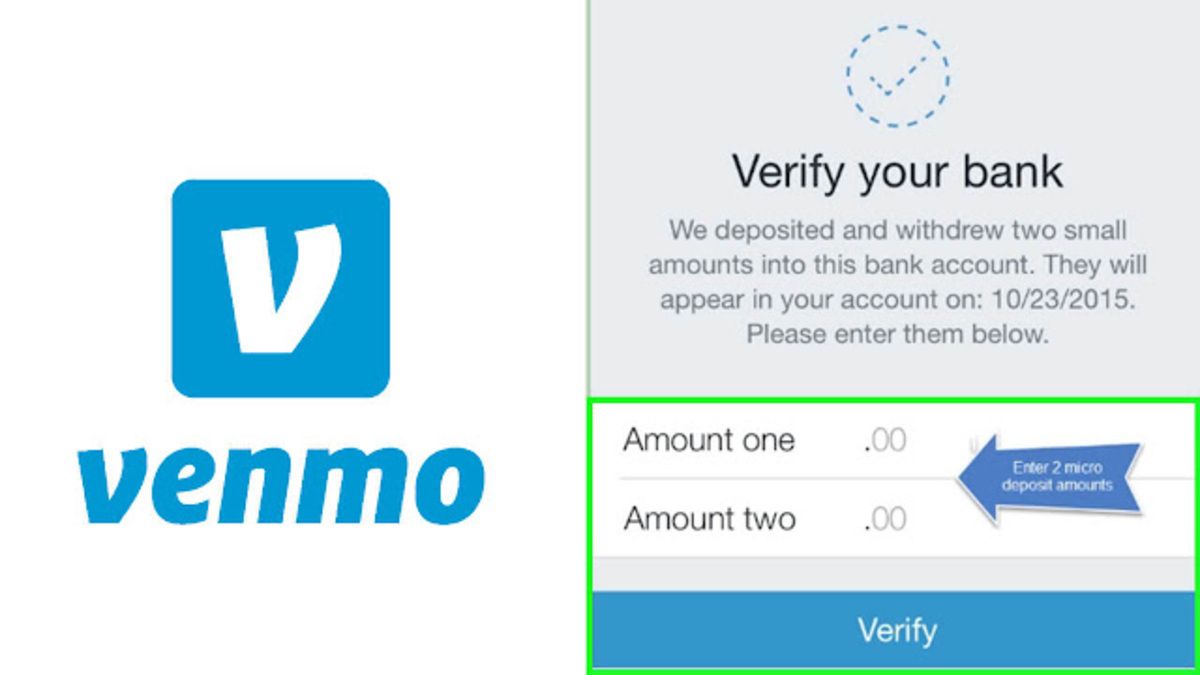Introduction
The financial services industry is undergoing a significant transformation due to the emergence of open banking. Open banking refers to the practice of sharing customer data securely between different financial institutions through the use of Application Programming Interfaces (APIs). This shift has been made possible by advancements in technology and regulatory changes aimed at increasing competition and improving customer experience.
In the traditional banking model, customers primarily interacted with a single bank for all their financial needs. However, with open banking, customers now have the ability to securely share their financial data with other trusted third-party providers, such as fintech companies and innovative startups. This data sharing allows for the development of new products and services that can enhance customer financial well-being and drive innovation in the industry.
This article explores the implications of open banking on traditional banks, as well as the opportunities and challenges it presents. The discussion will delve into the increased competition among financial institutions, the benefits for customers, the challenges related to data security and privacy, regulatory compliance, and the evolving business models required to thrive in this new era of open banking.
As open banking continues to reshape the financial services landscape, it is crucial for banks to stay ahead of the curve and adapt to the changing dynamics. By understanding the key drivers and consequences of open banking, banks can position themselves strategically to leverage the opportunities it presents and navigate the challenges that arise.
Overview of Open Banking
Open banking is a concept that promotes transparency, competition, and collaboration in the banking industry. It involves the sharing of banking data, with the customer’s consent, among financial institutions through APIs. These APIs act as gateways that securely transfer data between parties, enabling customers to access a wider range of financial products and services.
One of the primary objectives of open banking is to empower customers and enhance their control over their financial data. In the traditional banking model, customers often faced challenges when trying to access their financial information or share it with other institutions. Open banking removes these barriers by allowing customers to grant access to their data to trusted third-party providers.
By embracing open banking, banks can leverage innovative technologies, such as machine learning and artificial intelligence, to offer personalized services and streamline customer experiences. For example, with access to a customer’s financial data from various sources, banks can provide customized financial advice, personalized budgeting tools, and tailored product recommendations.
Open banking also fosters increased competition in the industry. With the ability to access customer data from multiple sources, new entrants like fintech companies and other financial service providers can develop innovative solutions that offer a more compelling value proposition. This competition drives traditional banks to enhance their products and services and improve customer satisfaction to stay relevant.
Moreover, open banking promotes collaboration between banks and third-party providers. Instead of viewing each other as competitors, banks can form partnerships and share their strengths to deliver innovative products and services. For example, a bank might collaborate with a fintech company to offer a seamless payment solution or partner with a wealth management firm to provide comprehensive financial planning services.
In summary, open banking represents a significant shift in the banking industry, enabling the secure sharing of customer data among financial institutions. It empowers customers, drives competition, and encourages collaboration. By embracing open banking, banks can not only meet customer demands but also foster innovation and stay ahead in this digital era of financial services.
Increased Competition
Open banking has brought about a wave of increased competition within the banking industry. With the ability to access customer data from multiple sources, new players, such as fintech startups and technology giants, have entered the market, challenging the dominance of traditional banks.
These new entrants often offer innovative and specialized financial products and services that cater to specific customer needs. They leverage advanced technology and data analytics to deliver superior customer experiences and personalized solutions. This increased competition forces traditional banks to reevaluate their strategies and make improvements to remain competitive.
One of the key areas where competition is intensifying is in the payments space. With open banking, customers can make payments directly from their bank accounts using third-party payment service providers, bypassing traditional card schemes. This shift towards instant payments and the rise of mobile wallets present challenges for banks to retain their position as the primary payment provider.
Furthermore, open banking allows customers to compare products and services offered by different financial institutions more easily. With the ability to access data from a variety of sources, customers can make informed decisions and choose providers that offer better value propositions. This transparency compels banks to offer competitive interest rates, lower fees, and enhanced customer experiences to attract and retain customers.
Another aspect of increased competition is the rise of platform banking. As banks partner with third-party providers to offer a wider range of services, customers can access a comprehensive set of financial products and services through a single platform. This integration and collaboration create a seamless experience for customers and increase their loyalty to the platform, driving traditional banks to adapt and develop their own platform strategies.
Overall, the increased competition resulting from open banking pushes traditional banks to innovate, improve customer experiences, and adapt their business models. To remain competitive, banks need to leverage their existing customer base, develop partnerships with fintech companies, and invest in technology to deliver personalized and value-driven solutions.
Customer Benefits and Convenience
One of the most significant advantages of open banking is the array of benefits and enhanced convenience it offers to customers. Through secure data sharing, customers gain access to a wide range of financial products and services tailored to their specific needs and preferences.
First and foremost, open banking empowers customers by giving them greater control over their financial data. With their consent, customers can share their data with third-party providers who can then offer personalized financial advice, budgeting tools, and product recommendations. This personalized approach allows customers to make more informed financial decisions and improve their money management skills.
Additionally, open banking simplifies the account aggregation process. Instead of logging into multiple banking applications, customers can use a single platform that integrates their various financial accounts. This aggregation provides a holistic view of their finances, making it easier to track income, expenses, and investments all in one place. This consolidated view saves customers time and effort, reducing the need to switch between different applications to manage their money.
Moreover, open banking enables faster and more seamless payments. With the use of third-party payment service providers, customers can initiate transactions directly from their bank accounts without the need for traditional payment methods like cards or checks. This instant payment capability enhances convenience and expedites transactions, eliminating the need for manual processes and reducing the risk of errors.
Open banking also promotes easier and more efficient loan applications. With customer consent, lenders can access a customer’s financial data from multiple sources, enabling a more accurate assessment of creditworthiness. This streamlined process reduces the paperwork and time traditionally associated with loan applications, making it more convenient for customers to access credit and funding.
Furthermore, open banking allows for seamless integration with third-party financial management tools. Customers can connect their bank accounts with personal finance apps, budgeting tools, or investment platforms, providing them with a comprehensive overview of their financial health and enabling them to make more informed decisions about their money.
In summary, open banking provides customers with a host of benefits and enhanced convenience. It offers personalized financial advice, simplifies account aggregation, facilitates faster payments, streamlines loan applications, and enables seamless integration with financial management tools. By leveraging these advantages, customers can enjoy a more holistic and convenient banking experience.
Enhanced Personal Financial Management
One of the significant impacts of open banking is the enhanced personal financial management capabilities it provides to customers. With the secure sharing of financial data, customers have access to a wealth of tools and services that help them better understand and manage their finances.
First and foremost, open banking allows for comprehensive and real-time financial visibility. Through APIs, customers can aggregate their financial data from multiple accounts and institutions into a single platform or application. This consolidated view gives customers a holistic perspective of their income, expenses, and savings across various financial sources. With this real-time financial snapshot, customers can make more informed financial decisions and better track their progress towards their financial goals.
Furthermore, open banking facilitates the development of advanced personal finance management tools. Through APIs, third-party providers can develop intelligent budgeting and expense tracking applications that analyze customer data and provide insights and recommendations to optimize spending habits. These tools can categorize expenses, set budgets, and provide alerts to help customers stay on track with their financial goals.
Another area where open banking improves personal financial management is in the realm of saving and investing. With access to a broader range of financial products and services, customers can explore different savings accounts with better interest rates, investment platforms with diversified investment options, and robo-advisors that offer automated investment advice based on customer preferences and risk tolerance. This variety of options empowers customers to make informed decisions about where to allocate their savings and investments, ultimately helping them build wealth and achieve long-term financial stability.
Open banking also enables personalized financial recommendations. With the consent of the customer, third-party providers can analyze financial data, such as spending patterns, income, and financial goals, to offer tailor-made offers and recommendations. For example, customers may receive suggestions for credit cards with better rewards or loans with lower interest rates. These personalized recommendations save customers time and effort by presenting them with options that align with their financial needs and preferences.
Moreover, open banking fosters innovation in financial management by encouraging the development of novel solutions. Fintech companies and startups can leverage open banking to create new tools and services that address specific pain points in personal finance management. This constant innovation helps customers stay on top of their finances and adapt to changing financial circumstances or goals.
In summary, open banking empowers customers with enhanced personal financial management capabilities. By leveraging the secure sharing of financial data, customers gain access to a comprehensive view of their finances, advanced budgeting and expense tracking tools, personalized savings and investment options, and tailored financial recommendations. Ultimately, open banking equips customers with the tools they need to take control of their financial well-being and achieve their financial goals.
Data Security and Privacy Challenges
While open banking offers various benefits, it also raises concerns regarding data security and privacy. The sharing of financial data between multiple parties requires robust security measures and diligent adherence to privacy regulations to ensure the protection of customer information.
One of the primary challenges is the risk of data breaches. With increased accessibility to customer data, there is a higher potential for unauthorized access and cyber-attacks. Financial institutions and third-party providers must invest heavily in cybersecurity defenses and regularly update their systems to protect against evolving threats. Encryption, secure APIs, and multi-factor authentication are critical safeguards that must be implemented to mitigate these risks.
Another challenge lies in securing consent and ensuring transparent data usage. Customers must be fully informed about how their data will be used and have the option to provide or revoke consent at any time. Banks and third-party providers must establish clear, easily understandable privacy policies and consent mechanisms to build trust and ensure customers are in control of their data.
Additionally, open banking necessitates strong data governance practices. Financial institutions and third-party providers need to implement robust data protection frameworks that encompass data storage, processing, and sharing practices. Data must be handled in a compliant manner, following regulatory guidelines such as the General Data Protection Regulation (GDPR) or other applicable data protection laws specific to the region.
Transparency in data management is vital to address privacy concerns. Customers should have visibility into who has access to their data and how it is being used. Measures like audit trails and logging can help monitor data usage and provide transparency to customers and regulatory authorities, ensuring compliance and maintaining trust in the open banking ecosystem.
Furthermore, the use of data anonymization techniques can help mitigate privacy risks. By removing personally identifiable information from datasets, the risk of re-identification and unauthorized use of customer data is reduced. However, striking a balance between data anonymization and maintaining the usefulness of aggregated data can be challenging and requires careful consideration.
Lastly, regulatory compliance is a significant challenge in the realm of data security and privacy. Financial institutions and third-party providers must navigate a complex landscape of regulations and ensure compliance with relevant laws governing data protection, customer consent, and data sharing. Keeping up with evolving regulations and adapting systems and practices accordingly is crucial to maintaining compliance and avoiding penalties.
In summary, while open banking offers numerous benefits, data security and privacy challenges must be addressed. Robust cybersecurity measures, transparent data usage practices, strong data governance frameworks, transparency in data management, the use of data anonymization techniques, and regulatory compliance are crucial in ensuring the safety and privacy of customer data in the open banking environment.
Regulatory Compliance and Risk Management
With the advent of open banking, financial institutions and third-party providers face increased regulatory compliance and risk management challenges. The sharing of customer data across multiple institutions requires stringent adherence to regulations to ensure transparency, fairness, and protection of customer rights.
One of the key regulatory aspects of open banking is data protection. Financial institutions and third-party providers must comply with data protection laws, such as the General Data Protection Regulation (GDPR) in the European Union, which govern the collection, storage, and processing of personal data. Compliance with these regulations is essential to maintain customer trust and avoid penalties associated with mishandling or unauthorized use of customer data.
Additionally, financial institutions and third-party providers must comply with local and international financial regulations, including Anti-Money Laundering (AML) and Know Your Customer (KYC) requirements. These regulations help prevent money laundering, fraud, and terrorist financing by ensuring the validity and legitimacy of customer identities and transactions. Compliance with these regulations is crucial to prevent potential legal and reputational risks associated with noncompliance.
Moreover, risk management is a critical aspect of open banking. The sharing of customer data requires robust risk assessment and mitigation strategies to protect both the financial institution and the customer. A comprehensive risk management framework should be established that identifies, assesses, and manages risks associated with data breaches, cyber-attacks, unauthorized access, and data misuse. Regular risk assessments, vulnerability testing, and incident response planning are essential components of an effective risk management approach.
Open banking also introduces risks related to partnering with third-party providers. Financial institutions must assess the reputation, reliability, and security measures of these providers to ensure they meet the required standards. Robust due diligence, contractual agreements, and ongoing monitoring of third-party relationships are vital to mitigate the risks associated with outsourcing services while maintaining regulatory compliance.
In order to effectively navigate the regulatory landscape and manage risks, financial institutions must establish a culture of compliance and risk awareness. This includes training employees on regulatory requirements, implementing internal controls and monitoring systems, and continuously staying up-to-date with regulatory changes and industry best practices.
Collaboration between regulators, financial institutions, and third-party providers is also crucial to establish industry-wide standards and guidelines for open banking. Regulatory bodies play a key role in providing clear and comprehensive regulatory frameworks that ensure fairness, security, and customer protection in the open banking ecosystem.
In summary, regulatory compliance and risk management are paramount in the realm of open banking. Financial institutions and third-party providers must comply with data protection regulations, AML and KYC requirements, and establish robust risk management frameworks to protect customer data and mitigate associated risks. Collaboration between industry stakeholders and regulatory bodies is essential to create a secure and trusted open banking environment.
Changes in Business Models
Open banking is bringing about significant changes in the business models of traditional banks and financial institutions. With increased competition and the emergence of new players in the market, banks are required to adapt their strategies and embrace innovation to remain relevant in the evolving landscape.
One of the key shifts in business models is the move towards platform banking. Traditional banks are developing platforms that integrate various financial products and services from their own offerings as well as third-party providers. These platforms offer customers a one-stop-shop experience, allowing them to access a wide range of financial services through a single interface. By offering a comprehensive range of products and services, banks can enhance customer loyalty and drive revenue growth.
Additionally, open banking encourages banks to adopt a more customer-centric approach. With increased transparency and competition, banks need to put the customer at the center of their business models. This means providing personalized experiences, tailored product recommendations, and seamless integration with third-party applications or platforms to meet the evolving needs and preferences of customers.
Open banking also fosters collaboration and partnerships. Instead of viewing fintech companies and other third-party providers as competitors, banks are now forming strategic collaborations to leverage each other’s strengths and deliver innovative solutions. These partnerships can range from co-developing new services to integrating existing offerings, enabling banks to expand their product portfolios and tap into new customer segments.
Furthermore, data-driven decision-making is becoming crucial in the new era of open banking. Banks now have access to a plethora of customer data from various sources, allowing them to gain valuable insights into customer behavior, preferences, and financial needs. By leveraging advanced analytics and artificial intelligence, banks can harness this data to make data-driven decisions, identify new market opportunities, and offer personalized solutions that meet specific customer needs.
Another notable change is the need for agile and flexible technology infrastructure. Open banking requires a robust and secure IT infrastructure that can handle the increased data exchange, integration with third-party systems, and scalability to accommodate growing customer demand. Banks need to invest in modern technologies, such as cloud computing and API management, to ensure the seamless and secure flow of data between systems and maximize the benefits of open banking.
Moreover, customer acquisition and retention strategies are evolving in the open banking era. With increased competition, banks are focusing on delivering exceptional customer experiences, offering personalized incentives and loyalty programs, and building strong relationships with customers. Retaining a loyal customer base is essential in a market where customers have easy access to alternatives and can switch providers more readily.
In summary, open banking is reshaping traditional bank business models. Banks are moving towards platform banking, adopting customer-centric approaches, fostering collaborations, leveraging data-driven decision-making, investing in agile technology infrastructure, and designing customer acquisition and retention strategies to adapt to the changing industry landscape. Embracing these changes will enable banks to thrive in the era of open banking and meet the evolving needs and expectations of customers.
Collaborations and Partnerships
In the era of open banking, collaborations and partnerships between traditional banks and third-party providers have become an essential component of success. By leveraging each other’s strengths and capabilities, these collaborations drive innovation, enhance customer experiences, and create new business opportunities.
One of the key drivers of collaborations is the ability to offer customers a wider array of products and services. Traditional banks can partner with fintech companies and innovative startups to expand their offerings beyond traditional banking services. This enables them to tap into new customer segments, diversify their revenue streams, and enhance their competitiveness.
For fintech companies and third-party providers, partnerships with established banks can provide access to a large customer base and regulatory expertise. Banking institutions have a strong foundation in terms of compliance, risk management, and customer trust. Collaborating with banks allows fintech companies to leverage these strengths and accelerate their market penetration.
Collaborations can also lead to the development of innovative solutions that address specific customer needs. By combining their expertise, banks and third-party providers can develop new products and services that offer unique value propositions. For example, a bank might collaborate with a fintech company specializing in blockchain technology to create a secure and efficient cross-border payment solution.
These partnerships can also enhance customer experiences by integrating financial services with non-financial offerings. For instance, banks may partner with e-commerce platforms to offer seamless checkout experiences or collaborate with ride-sharing companies to provide integrated payment solutions. These initiatives remove frictions for customers and improve overall convenience.
Furthermore, partnerships can help financial institutions overcome resource limitations and accelerate digital transformation. Fintech companies often bring agility, innovation, and advanced technological capabilities that banks may lack. By collaborating, banks can leverage the expertise of these third-party providers to enhance their digital offerings, streamline processes, and respond quickly to changing customer demands.
Open banking initiatives facilitated by collaborations also foster interoperability among different financial institutions and third-party providers. This enables customers to access their financial information across various platforms and services seamlessly. For example, a customer may use a money management app that aggregates data from multiple banks and credit card providers, offering a consolidated view of their finances.
However, it is important to note that collaborations in open banking must be built on trust, transparency, and clear communication. Establishing robust contractual agreements and data sharing protocols is vital to protect the interests of all parties involved and ensure compliance with data protection regulations. Ongoing monitoring of partnerships and regular evaluation of their effectiveness are essential to maintain successful collaborations.
In summary, collaborations and partnerships between traditional banks and third-party providers are key drivers of innovation, enhanced customer experiences, and new business opportunities in the open banking era. These partnerships enable the expansion of product offerings, improved customer experiences, and acceleration of digital transformation. By embracing collaborations, banks can stay at the forefront of the industry and address the evolving needs of customers in the open banking ecosystem.
Conclusion
The advent of open banking has brought about significant changes in the banking industry, creating both challenges and opportunities for traditional banks and financial institutions. This shift towards increased transparency, data sharing, and collaboration has transformed the way customers access and manage their financial services.
Open banking has led to increased competition, pushing banks to innovate and improve their products and services to meet customer demands. The ability to securely share financial data has empowered customers with personalized financial management tools, seamless payment experiences, and a wider range of banking options. It has also fostered collaborations and partnerships between banks and third-party providers, driving innovation and creating new business opportunities.
However, alongside these benefits, open banking has also presented challenges. Data security and privacy concerns require robust security measures, transparent data usage, and strong data governance practices. Regulatory compliance and risk management have become crucial to ensuring customer protection and long-term viability.
As open banking continues to shape the industry, banks must adapt their business models to remain competitive. This includes embracing platform banking, adopting customer-centric approaches, leveraging data-driven decision-making, investing in agile technology infrastructure, and forming collaborations and partnerships to drive innovation and enhance customer experiences.
In conclusion, open banking is revolutionizing the banking industry, bringing forth a new era of transparency, collaboration, and customer-centricity. By embracing the opportunities and addressing the challenges, traditional banks have the potential to thrive in this evolving landscape and provide customers with enhanced financial services and experiences. The future of banking lies in embracing the principles of open banking and leveraging technology to deliver innovative and personalized solutions that meet the changing needs of customers.

























